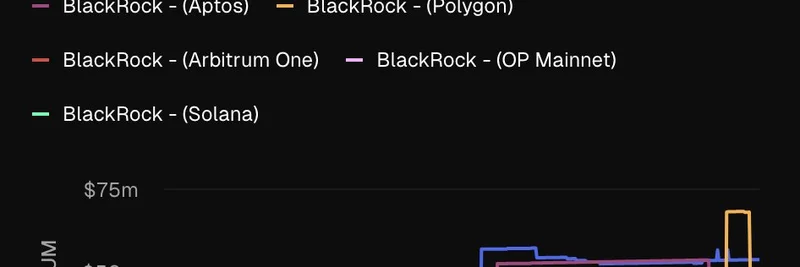Understanding BlackRock's BUIDL Fund
Hey there, crypto enthusiasts! If you're into the world of blockchain and digital assets, you've probably heard about BlackRock making waves with their tokenized funds. Today, we're zooming in on their BUIDL fund, which stands for BlackRock USD Institutional Digital Liquidity Fund. In simple terms, this is a money market fund that's been "tokenized," meaning its shares are represented as digital tokens on a blockchain. This allows for faster settlements, greater transparency, and easier access for institutional investors.
Launched back in March 2024 on the Ethereum network, BUIDL invests primarily in cash, U.S. Treasury bills, and repurchase agreements (repos). It offers a stable yield while bridging traditional finance (TradFi) with the crypto world through real-world asset (RWA) tokenization. As of recent reports, the fund has grown significantly, showcasing the growing appetite for on-chain financial products.
Expansion Across Multiple Blockchains
What's exciting is how BUIDL has gone multi-chain. According to a recent post from Token Terminal, the fund is now tokenized on seven different blockchains: Ethereum, Avalanche, Aptos, Polygon, Arbitrum One, OP Mainnet (that's Optimism's main network), and Solana.
This expansion isn't just about spreading out—it's a strategic move to tap into the unique strengths of each blockchain, like Solana's high speed and low costs or Ethereum's robust security. By being available on multiple chains, BUIDL makes it easier for users across the ecosystem to access tokenized Treasuries without being locked into one network.
Breaking Down the AUM Data
Assets Under Management (AUM) is a key metric here—it tells us how much money is invested in the fund on each chain. The chart from Token Terminal illustrates the tokenized AUM trends from July 2024 to July 2025. You can see lines for each chain, with Ethereum (in gray) holding steady as the leader.
Key takeaway: Excluding Ethereum, the average AUM per chain sits at around $36 million. That's a solid indicator of adoption, but it also highlights Ethereum's dominance in this space. The fluctuations in the chart show how AUM has evolved over time, with some chains experiencing dips and recoveries, possibly tied to market conditions or investor shifts.
For context, while earlier reports pegged BUIDL's total AUM in the billions, the latest data suggests a more modest distribution across these chains. This could reflect targeted allocations or market adjustments in mid-2025.
Why This Matters for Meme Tokens and Blockchain Practitioners
At Meme Insider, we're all about meme tokens, but news like this is crucial because it underscores the maturing blockchain landscape. Tokenized funds like BUIDL bring institutional money into the space, increasing liquidity and stability. For meme token creators and traders on chains like Solana (home to many viral memes), this means more robust infrastructure and potential crossovers with RWAs.
Imagine meme projects integrating with yield-bearing assets or using tokenized Treasuries as collateral—this could elevate the entire ecosystem. Plus, as more chains get involved, it democratizes access to high-quality financial products, helping practitioners stay ahead in this fast-evolving tech.
If you're curious about the data source, check out the original tweet from Token Terminal. Stay tuned for more updates on how traditional giants like BlackRock are shaping the future of crypto!
Related Resources
- Learn more about real-world assets (RWA) in crypto.
- Explore Token Terminal's analytics for deeper blockchain insights.



